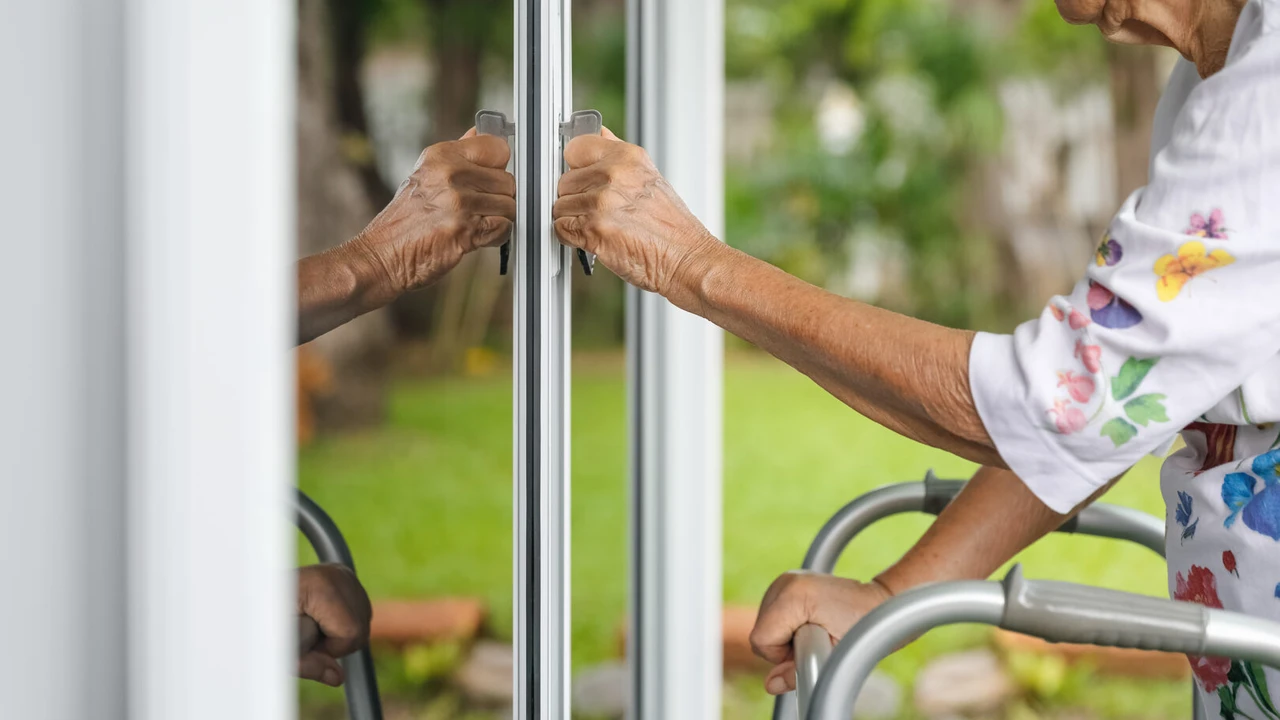5 Questions to Ask When Touring Independent Living
Prepare for your independent living tours with these essential questions to ensure you gather all necessary information.

5 Questions to Ask When Touring Independent Living
So, you're thinking about independent living, huh? That's a big step, and a really exciting one! It's all about finding a place where you can thrive, stay active, and enjoy your golden years without the hassle of home maintenance. But with so many options out there, how do you pick the right one? Touring communities is key, but just walking through isn't enough. You need to go in armed with the right questions. Think of it like being a detective, uncovering all the details to make the best decision for your future. We're going to dive deep into five crucial questions you absolutely must ask when you're checking out independent living communities. These aren't just surface-level questions; they're designed to get you the nitty-gritty info you need to truly compare places and find your perfect fit, whether you're looking in sunny Florida, bustling California, or even considering options in Southeast Asia.
Question 1 What are the True Costs and What's Included in the Monthly Fee Independent Living Pricing Transparency
This is probably the first thing on everyone's mind, right? Money. Independent living communities often have a monthly fee, but what exactly does that cover? It's not always as straightforward as it seems. You need to dig into the details to avoid any surprises down the road. Don't just ask for 'the price'; ask for a detailed breakdown.
Understanding Independent Living Monthly Fees and Hidden Costs
First off, ask for a comprehensive list of everything included in the base monthly fee. Does it cover utilities like electricity, water, and gas? What about internet and cable TV? Some communities include all of these, while others might charge extra. Laundry services are another big one – is there an on-site laundry facility you can use for free, or is there a charge per load? Or do they offer personal laundry services, and if so, what's the cost?
Then, inquire about meals. Many independent living communities offer meal plans. Is a certain number of meals per day or week included? Can you opt out of the meal plan if you prefer to cook for yourself? What are the dining options like? Are there different restaurants or dining rooms? Can guests join you for meals, and what's the charge for them?
Transportation is another key service. Do they offer scheduled transportation for appointments, shopping trips, or social outings? Is this included, or is there an additional fee per ride or for certain distances? This can be a huge convenience, especially if you're planning to give up driving.
What about housekeeping? Is weekly or bi-weekly housekeeping included? What does it entail – just vacuuming and dusting, or do they change linens and clean bathrooms too? Some communities offer light housekeeping, while others are more extensive. Knowing this helps you understand how much of your current chores will be taken off your plate.
Beyond the basics, ask about amenities. Is access to the fitness center, swimming pool, library, and common areas included? Are there any additional fees for classes, personal training, or special events? Some communities might have a 'community fee' or 'entrance fee' that's separate from the monthly charge. This can be a significant upfront cost, so make sure you understand if it's refundable, partially refundable, or non-refundable.
Comparing Independent Living Pricing Models Across Regions USA vs Southeast Asia
It's also worth noting that pricing structures can vary significantly depending on location. In the USA, especially in popular retirement states like Florida or California, you might see higher monthly fees due to property values and cost of living. Entrance fees are also more common in the US, sometimes ranging from tens of thousands to hundreds of thousands of dollars, often tied to a 'continuing care retirement community' (CCRC) model where you're paying for future care options.
In Southeast Asia, particularly in countries like Thailand or Malaysia, independent living options are emerging and can sometimes offer a more affordable alternative, though the services and amenities might differ. You might find more leasehold models rather than ownership, and the concept of a large upfront entrance fee might be less prevalent. However, it's crucial to understand currency exchange rates and potential repatriation costs if you're considering international options.
Always ask for a written breakdown of all costs, including any potential increases. How often do fees typically increase, and by what percentage? This transparency is vital for long-term financial planning.
Question 2 What are the Healthcare Services and Emergency Protocols Independent Living Safety and Medical Support
Even in independent living, where you're largely self-sufficient, having a clear understanding of healthcare support and emergency procedures is paramount. Things happen, and knowing there's a plan in place can provide immense peace of mind for both you and your family.
On-Site Medical Support and Emergency Response in Independent Living
Start by asking about emergency response systems. Do all residents have access to a call button or wearable device that connects them directly to staff in case of an emergency? How quickly do staff respond to these calls? What is the protocol for medical emergencies – do they call 911 directly, or do they have on-site medical personnel who assess the situation first?
While independent living doesn't typically provide daily medical care, some communities offer basic health services. Is there a nurse on staff during certain hours? Do they offer wellness checks or health screenings? Can they assist with medication reminders, or is that something you'd need to arrange separately through a home care agency?
It's also important to understand their relationship with local healthcare providers. Do they have preferred doctors, hospitals, or specialists they recommend? Do they offer transportation to medical appointments, and is that included in the fee or an extra charge?
What about transitions to higher levels of care? If your health needs change and you require assisted living or memory care, does the community have those options on-site or through a preferred partner? What is the process for transitioning, and what are the financial implications? This is especially relevant for CCRC models, where a continuum of care is built-in.
Technology for Senior Safety and Health Monitoring
Many modern independent living communities are integrating technology to enhance safety and well-being. Ask about smart home features. Do they offer smart thermostats, lighting, or voice-activated assistants that can help with daily tasks or emergencies? Are there fall detection systems available, either integrated into the apartment or as wearable devices?
Some communities use remote monitoring systems that can track activity levels or alert staff if a resident hasn't moved for an unusual period. While this might sound intrusive to some, for others, it offers an added layer of security. Understand what technologies are in place and how they are used to support residents' independence while ensuring their safety.
Consider specific products that might be relevant. For instance, a personal emergency response system (PERS) like Life Alert or Medical Guardian might be offered or recommended. These typically involve a wearable button that connects to a 24/7 monitoring center. Prices for these services can range from $20-$50 per month, depending on features like GPS tracking or fall detection. Some communities might include a basic PERS in their monthly fee, while others might require you to subscribe separately.
Another example is smart home hubs like Amazon Echo Show or Google Nest Hub. While not emergency systems, they can be incredibly useful for seniors for setting reminders, making video calls to family, or even controlling smart lights and thermostats. Some tech-forward communities might integrate these into units, or you might consider bringing your own. These devices typically cost between $50-$250, plus any subscription services for specific features.
Question 3 What are the Social Activities and Engagement Opportunities Independent Living Social Life and Community Engagement
One of the biggest draws of independent living is the vibrant social life and the opportunity to connect with peers. You're not just moving into an apartment; you're joining a community. So, understanding the social fabric is crucial for your happiness and well-being.
Daily Activities and Social Programs for Active Seniors
Ask for a sample activity calendar – not just for one week, but perhaps for a month. This will give you a much better sense of the variety and frequency of events. Look for things that genuinely interest you. Do they offer fitness classes like yoga, tai chi, or water aerobics? Are there art classes, book clubs, or gardening groups? What about educational seminars or guest speakers?
Beyond structured activities, inquire about informal social opportunities. Is there a common lounge or café where residents gather? Do they organize happy hours or movie nights? Are there opportunities for residents to start their own clubs or interest groups? A truly engaging community will empower residents to shape their own social experiences.
What about outings? Do they organize trips to local attractions, museums, theaters, or shopping centers? Are these included in the monthly fee, or are there additional costs? How often do these outings occur, and what's the transportation like?
Consider the size and demographics of the community. A larger community might offer a wider range of activities, but a smaller one might foster a more intimate, close-knit feel. Ask about the average age of residents and the male-to-female ratio, if that's important to you. While you shouldn't base your decision solely on demographics, it can give you a sense of whether you'll find like-minded individuals.
Promoting Well-being and Preventing Social Isolation
A good independent living community understands the importance of preventing social isolation. Ask what measures they take to encourage new residents to integrate. Do they have a buddy system or welcome committees? Are there staff members dedicated to organizing social events and helping residents connect?
Also, consider the dining experience. Are meals served in a communal dining room, encouraging interaction? Are there options for private dining with family and friends? The dining room often serves as a central hub for social connection.
For those who enjoy technology, ask about community portals or apps. Some communities use platforms like Touchtown or custom-built apps to share activity schedules, dining menus, and community news. These can also facilitate communication among residents and with staff. While not a 'product' you buy, it's a service that enhances community engagement. The cost of these platforms is typically absorbed by the community, but it's worth asking if they utilize such tools.
Another aspect is volunteer opportunities. Do they encourage residents to volunteer within the community or with local charities? This can be a fantastic way to stay engaged and feel a sense of purpose.
Question 4 What are the Staff-to-Resident Ratios and Staff Training Independent Living Staffing and Quality of Care
The staff are the heart of any independent living community. Their professionalism, friendliness, and responsiveness can make or break your experience. Don't be shy about asking detailed questions about staffing.
Understanding Staffing Levels and Responsiveness
First, ask about the staff-to-resident ratio, especially during different shifts (day, evening, night). While independent living residents require less direct care than those in assisted living, there should still be adequate staff to respond to emergencies, manage activities, and maintain the facility. A higher ratio generally indicates more personalized attention and quicker response times.
Inquire about the availability of staff. Is there always someone at the front desk or available by phone? How quickly do they respond to requests or concerns? During your tour, observe the staff interactions with current residents. Do they seem friendly, engaged, and respectful? Do residents seem comfortable approaching them?
What about turnover rates? High staff turnover can be a red flag, indicating potential issues with management or working conditions. While some turnover is normal, consistently high rates can disrupt continuity of care and relationships.
Staff Training and Specialized Skills for Senior Support
Even in independent living, staff should have training relevant to seniors. Ask about their training programs. Do they receive training in first aid and CPR? Are they trained in recognizing signs of distress or changes in a resident's health? While they won't be providing medical care, they should be equipped to identify when a resident needs assistance and how to escalate concerns appropriately.
For communities that offer some level of wellness support or medication reminders, inquire about the qualifications of the staff providing these services. Are they certified medication aides or nurses? What are their protocols for medication management?
Consider the cultural competency of the staff, especially if you're looking at communities in diverse areas or internationally. In Southeast Asia, for example, staff might be trained to understand and respect local customs and dietary preferences, which can significantly impact a resident's comfort and well-being.
Don't forget about maintenance and housekeeping staff. Are they employed directly by the community or are they contracted out? How quickly do they respond to maintenance requests? A well-maintained facility reflects a well-managed one.
During your tour, try to chat with a few staff members if possible. Ask them what they like about working there. Their genuine responses can offer valuable insights into the community's culture and management.
Question 5 What are the Resident Feedback Mechanisms and How are Concerns Addressed Independent Living Resident Satisfaction and Governance
A truly great independent living community isn't just about beautiful facilities; it's about a responsive and resident-focused environment. Knowing how your voice will be heard and how concerns are handled is incredibly important.
Resident Councils and Communication Channels
Ask if the community has a resident council or a similar body. This is a group of residents who meet regularly with management to discuss issues, provide feedback, and suggest improvements. A strong, active resident council is a sign of a healthy, transparent community where residents have a say in their living environment.
How often do residents meet with management? Are there regular town hall meetings or open forums where residents can voice their opinions? What are the formal channels for submitting suggestions or complaints? Is there an anonymous feedback option?
Inquire about how the community communicates important information to residents. Do they use newsletters, bulletin boards, email, or a community app? Effective communication ensures residents are always in the loop about activities, policy changes, and important announcements.
Addressing Concerns and Ensuring Resident Satisfaction
Beyond formal channels, ask about the process for addressing individual concerns. If you have a problem with your apartment, a service, or another resident, what's the procedure for getting it resolved? Who do you speak to, and what's the typical timeframe for resolution?
What is the community's philosophy on resident satisfaction? Do they conduct regular surveys to gauge resident happiness? How do they use that feedback to make improvements? A community that actively seeks and acts on feedback is one that truly cares about its residents.
Consider the lease agreement. Ask for a copy to review before you commit. What are the terms for moving out? What happens if your needs change and you need to transition to a different level of care? Understanding the contractual obligations is a key part of ensuring your satisfaction and peace of mind.
Finally, ask if you can speak with a few current residents, perhaps during a meal or a social activity. Their firsthand experiences and perspectives will be invaluable. They can tell you what they love about the community, what challenges they've faced, and how responsive the management has been. This informal feedback can often be the most telling indicator of a community's true character.
By asking these five comprehensive questions, you'll move beyond the glossy brochures and get a real sense of what each independent living community has to offer. This thorough approach will empower you to make an informed decision, ensuring you choose a place where you can truly thrive and enjoy your independent lifestyle to the fullest.
:max_bytes(150000):strip_icc()/277019-baked-pork-chops-with-cream-of-mushroom-soup-DDMFS-beauty-4x3-BG-7505-5762b731cf30447d9cbbbbbf387beafa.jpg)






